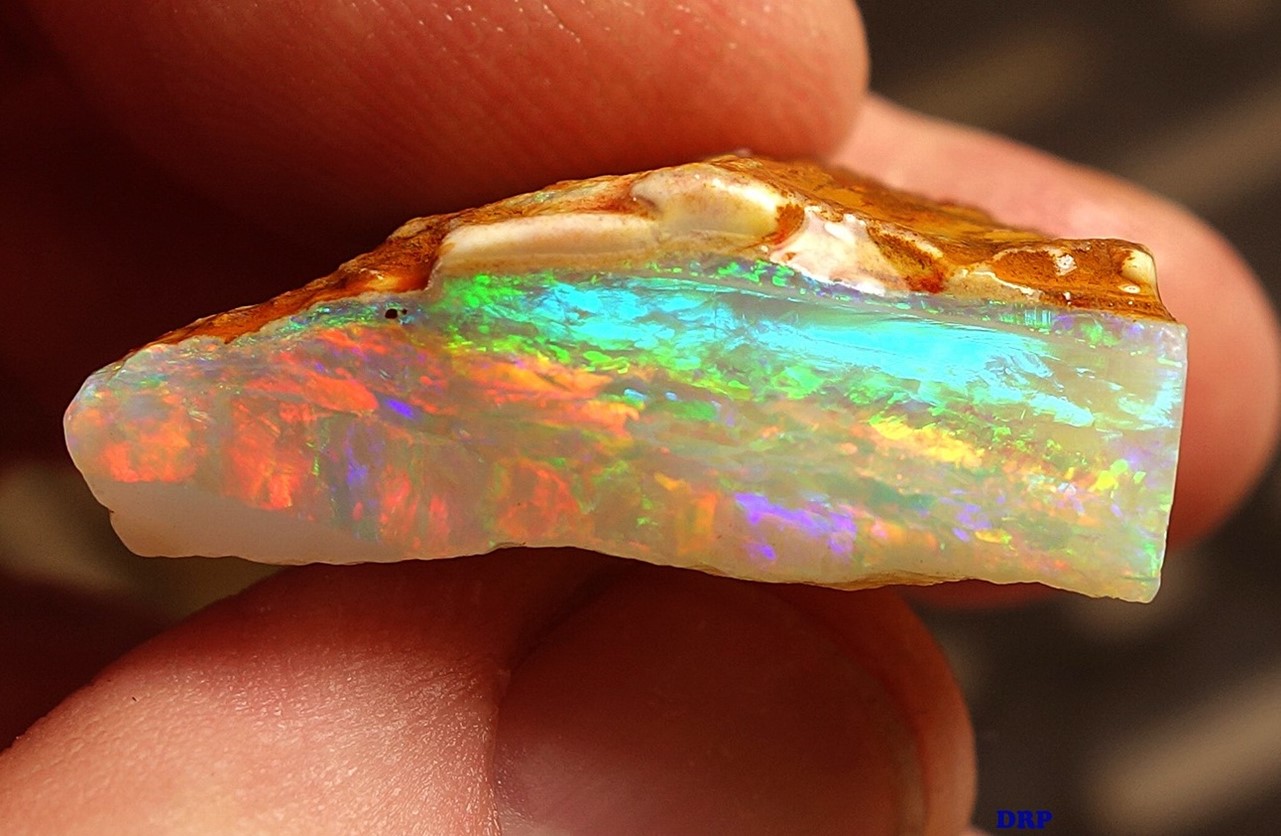
Credit: Dpulitzer, via Wikimedia Commons
In the remote desert town of Coober Pedy, in South Australia, summer temperatures can reach 127 degrees—so hot that many residents live below ground, where the temperature is a constant 75 degrees.
This tradition began 100 years ago when the first opals were discovered, and so was born an underground cottage mining industry that endures today.
Only 5 percent of opals found worldwide are designated as precious, with a fiery play of color within them, and 95 percent of those come from Australia.
Unlike other gemstones, opals are not minerals but instead made of microscopic spheres of quartz—silicon dioxide—that form very slowly in sediment layers at low temperature in the presence of water.
Perhaps it’s not surprising then, that opals are 10 to 20 percent water.
As they form, they may replace minerals in existing fossils. Some of the Coober Pedy opals inherit the fossil forms of ancient sea creatures.
Here, the Australian government has discouraged large-scale mining by limiting prospectors to single claims.
The result is more than 250,000 small mine shafts in the area, some of which have been converted into underground homes, hotels and businesses.
To excavate a new home costs about the same as building one above ground. But the diggers may uncover more gemstones in the process, which helps to subsidize the cost of the home.
Now that’s a valuable opal.
Background
Synopsis: Opals aren’t minerals, but they are gems. These stunning mineraloids, famous for their multicolored flashes, often replace fossils as much as 125 million years old. Ninety-five percent of Earth’s opals come from remote Coober Pedy, South Australia. North of Adelaide by 526 mi (846 km), the remote desert town is also famous for its scorching outdoor temperatures ranging up to 127°F (53°C) that drove residents to live in underground dugout homes. Now it is making a name for itself as an off-grid sustainable energy community.
- Most gems are minerals, but opals lack a specific crystalline structure, so they are classified as hydrated amorphous silica mineraloids.
- Opal gemstones are characterized by their stunning “play of color,” an optical phenomenon that creates flashes of bright colors within the stones.
- The natural chemical conditions required to form gem-grade opals rarely occur, so these stones are scarcer than diamonds.
- Opals have the chemical formula SiO2·nH2O and typically contain between 6–10% water by weight but can range from as low as 3% to as high as 21% water.
- The matrix of opal ranges in color from grey to amber to white depending on traces of additional minerals that may be admixed.
- Ninety-five percent of opals mined are common opal with a waxy sheen, a hardness of 5–6, and no play of color. Only about 5% are precious opals.
- Ninety-five percent of the world’s precious opals have been mined in Australia, so in 1994, Australia declared opal to be the country’s national gemstone.
- Opal also occurs in Brazil, Mexico, Ethiopia, the United States, Canada, Peru, Indonesia, Honduras, Slovakia and the Czech Republic.
- The iridescent play of color is unique for every precious opal.
- Opals are colloids made of millions of tiny spheres of silicon dioxide (SiO2, the same chemical formula as quartz) that slowly form at low temperatures within buried sediments in the presence of water.
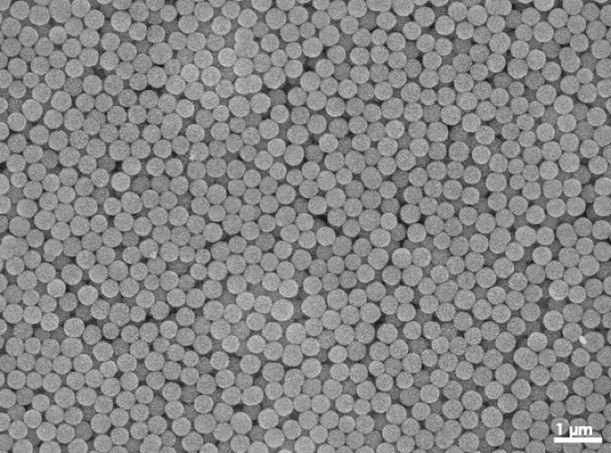
Scanning Electron Microscope image of a colloid, made up of tiny spheres.
Credit: Yasrena, via Wikimedia Commons - These spheres can only be seen using an electron microscope and are arranged in hexagonal or cubic close-packed lattices, producing planar alignments of voids among the spheres.
- Where sphere size and stacking are consistent, these planes become large enough to visibly diffract white light, creating the characteristic colored flashes.
- Planes within clusters of smaller spheres produce shorter wavelength purple, blue and green colors, while planes within groups of larger spheres produce longer wavelength yellow and red flashes.
- Opals are colloids made of millions of tiny spheres of silicon dioxide (SiO2, the same chemical formula as quartz) that slowly form at low temperatures within buried sediments in the presence of water.
- Precious opals are mined from flat-lying layers within 90 ft (30 m) of the surface along the buried margins of a Cretaceous inland sea.
- From about 125 to 90 million years ago a huge shallow sea covered central Australia.
- Volcanic and organic rich sediments that were deposited within the sea and along its coasts were exposed to erosion and subtropical weathering for about 50 million years, with acidic groundwater releasing silica and iron from the rocks.
- About 40 million years ago, the climate turned arid and groundwater became more alkaline.
- Opal slowly replaced sediments and fossils, especially in the crests of broad folds.
- Over the past 10 million years, the sediments eroded to form scarps in Australia’s present day outback deserts.
- On February 1, 1915, Willie Hutchison, the 15-year-old son of gold miners prospecting in the area, found the first opal more than 526 mi (846 km) north of Adelaide near the current town of Coober Pedy, South Australia.
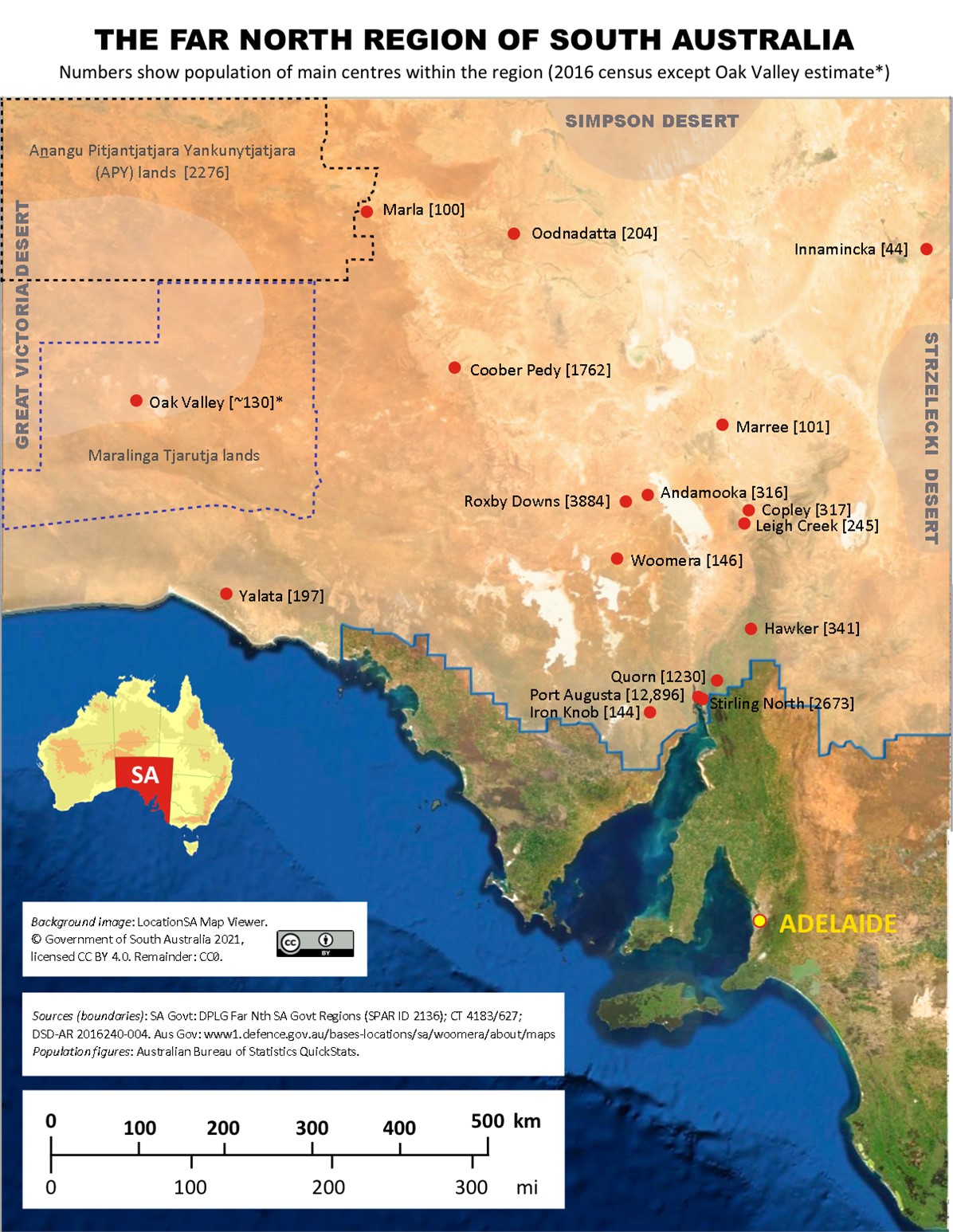
Towns of South Australia on a satellite image of the region.
Credit: The Government of South Australia owns copyright in this work, which it has licensed in keeping with the Open Data Policy initiated by the Australian Government, via Wikimedia Commons- Within a year, miners had arrived, moving into unique underground dugouts to escape the bothersome flies and intense heat that ranged as high as 127°F (53°C) in the summer.
- In 1917, with the end of the First World War and the completion of the Transcontinental Railway, workers rushed to the region to make their fortunes.
- When the post office was established in 1920, the town was named Coober Pedy, which is thought to derive from the aboriginal kupa-piti, which means "whitefellas' hole." In 1975, the aboriginal people of the town selected the name Umoona, the name of a local acacia tree with the added meaning “long life.”
- Like most mining towns, Coober Pedy struggled through many boom-and-bust cycles over the years, especially during the Great Depression.
- There were more than 250,000 mine shaft entrances in the 70 distinct Coober Pedy Opal Fields by 1999. The government discouraged large-scale mining by restricting prospectors to single small claims.

Opal mine shafts are 10 to 30 feet (3–10 meters) deep in the Coober Pedy Opal Fields.
Credit: Eric Spenle, via Wikimedia Commons
- Coober Pedy is famous for remarkable opals that have replaced the hard and soft parts of fossil bivalves, gastropods, belemnites, and crinoids, as well as ichthyosaurs and plesiosaurs.
- The main opal mines are found in veins in the Lower Cretaceous Aptian (113–125-million-year-old) Bulldog Shale.
- Many opals replace fossils, producing exquisite specimens.
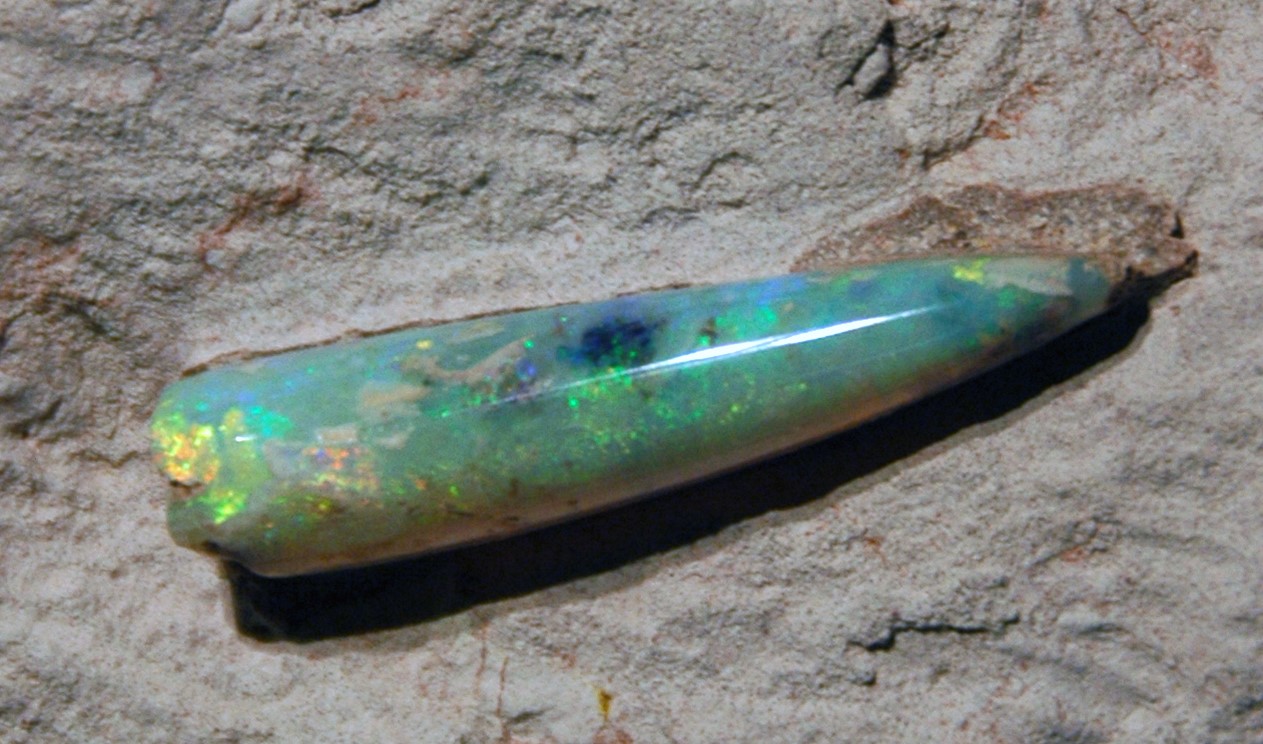
This opalized belemnite mined from the Bulldog Shale near Coober Pedy is representative of a group of extinct cephalopods with squid-like bodies covering elongated bullet-shaped internal skeletons that became fossilized.
Credit: James St. John, CC BY 2.0, via Wikimedia Commons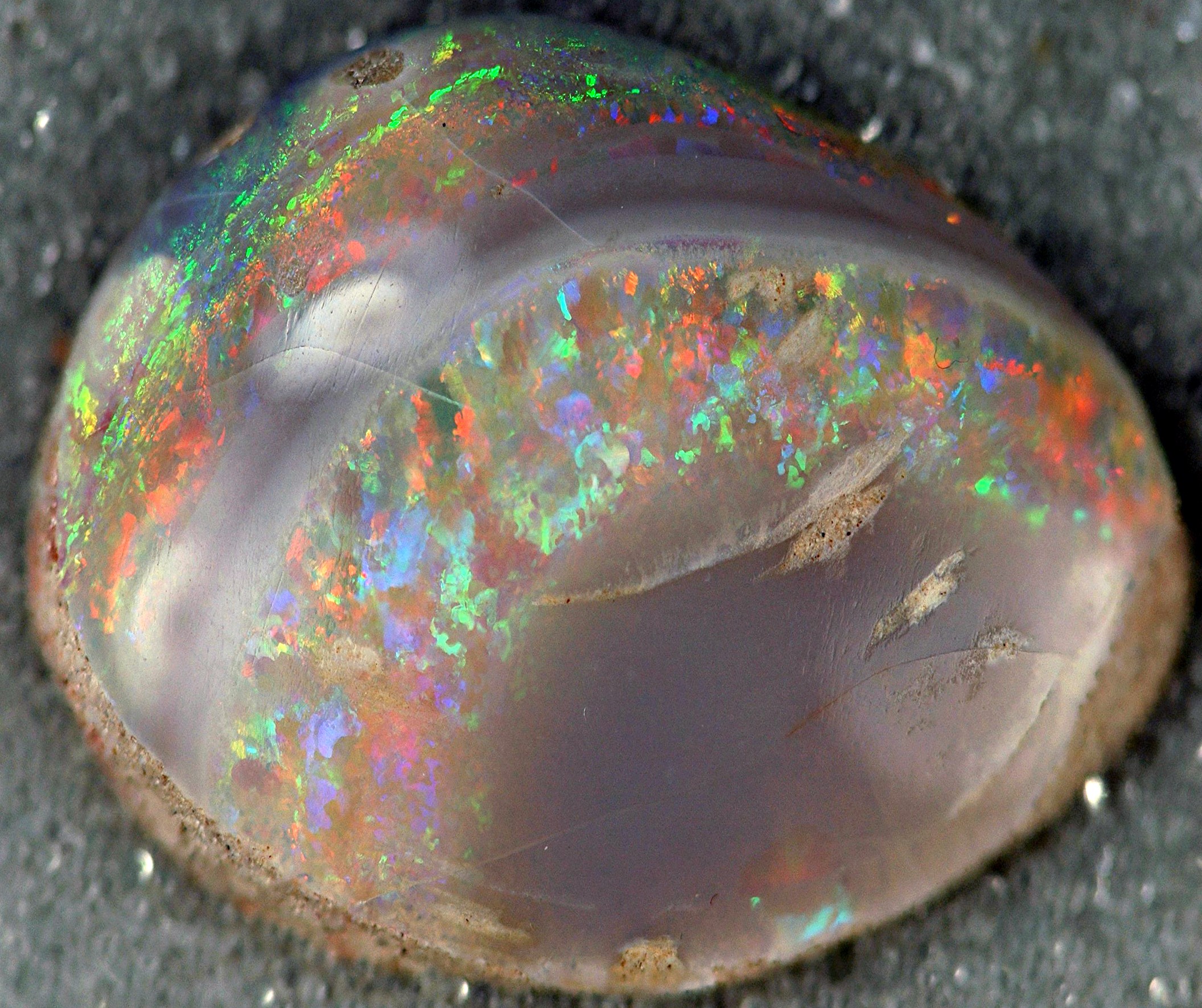
An opalized bivalve mollusc (clam) from the Bulldog Shale in the Coober Pedy Opal Field, South Australia.
Credit: James St. John, CC BY 2.0, via Wikimedia Commons - Opals are beautiful to wear but are fragile, requiring special care because of the water within the mineraloid. They can be damaged by extreme temperatures, chemicals and dryness. It is best to seal them in a plastic bag with a damp cloth to preserve their moisture.
- Today, life in Coober Pedy is mostly underground for its residents, most of whom still support the local mining industry.
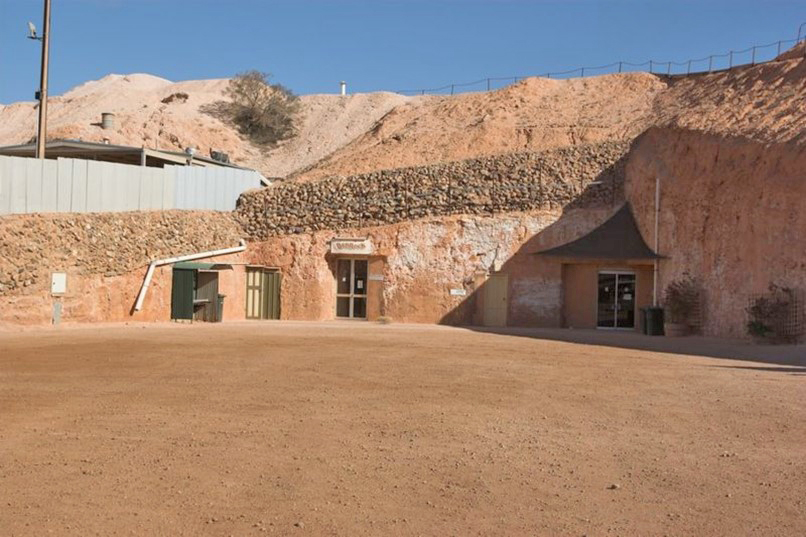
Entrances to homes and businesses in Coober Pedy. Temperatures in the underground homes stays a constant 75°F (24°C). Surface noise can’t be heard in the subterranean environment.
Credit: Lodo27 from Moscow, Russia, via Wikimedia Commons- While early miners originated the idea of underground living more than 100 years ago, more than 60% of current residents have taken up residence underground, even occupying some of the many discarded opal mines.
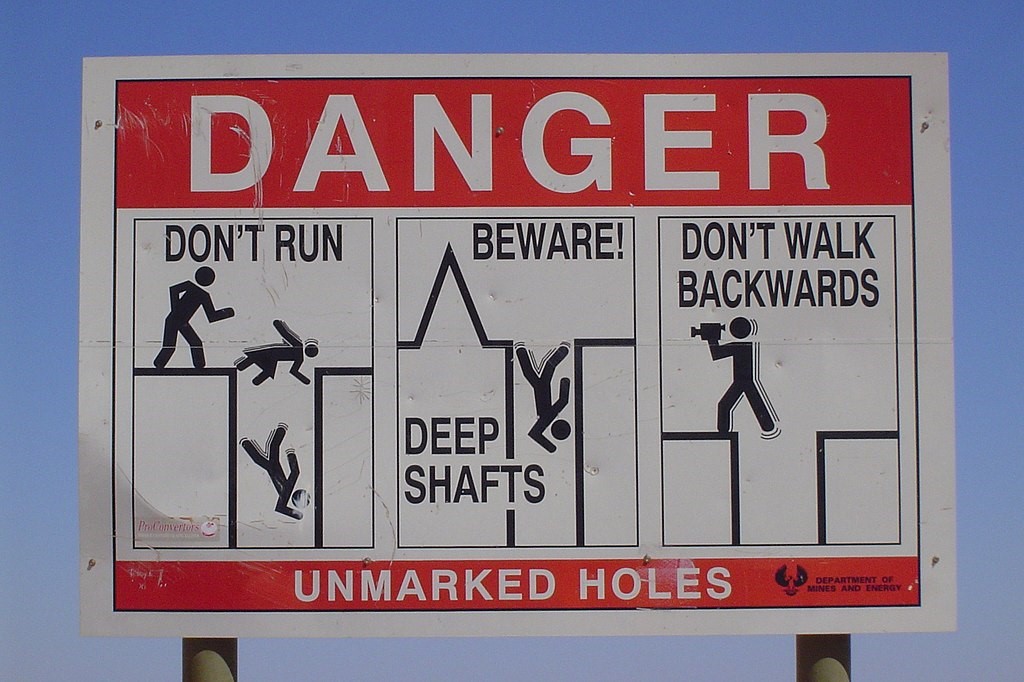
Since many of the town’s homes are built in abandoned mines, dropping in for a visit has an entirely different meaning in Coober Pedy, as this warning sign explains.
Credit: photograph by Guji~commonswiki, public domain, via Wikimedia Commons - Hotel rooms, bars, bookstores and churches are carved or drilled into the hillsides, then the rock is sealed with a sealant like polyurethane to form the interior walls of the rooms.
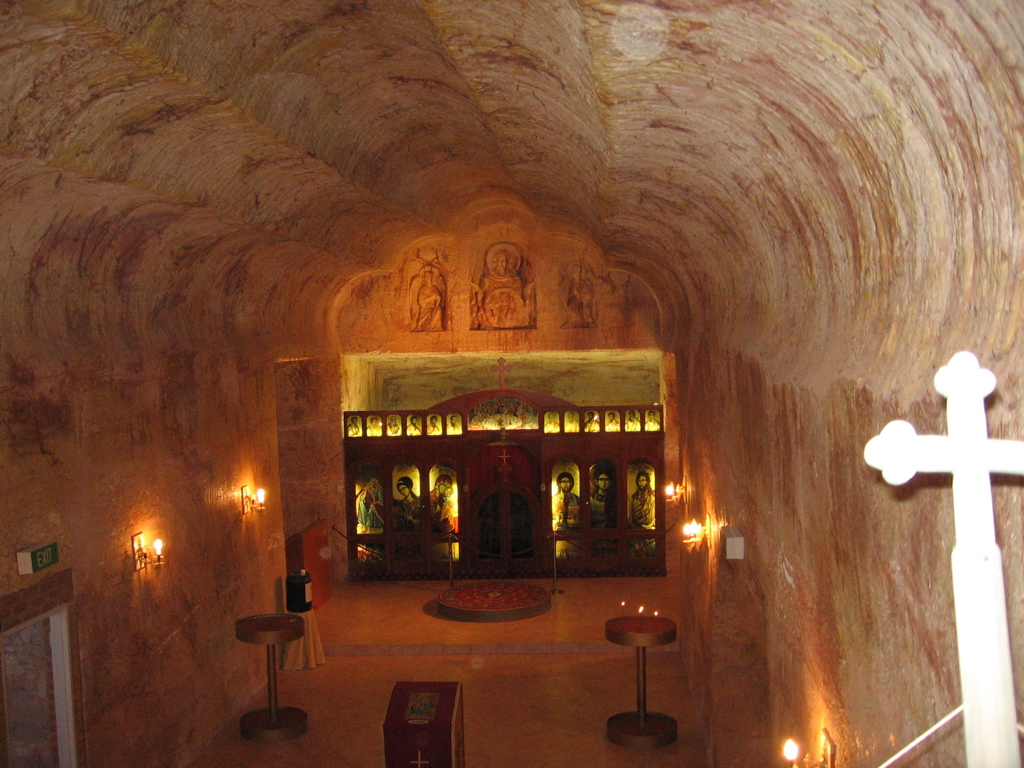
Interior of the Serbian Orthodox Church of St. Elijah in Coober Pedy, South Australia, located 55 feet below the Earth's surface.
Credit: Robert Link, via Wikimedia Commons - Underground homes can be excavated for about the cost of an above ground home, but while excavating and taking care not to blast through into their neighbor’s homes, “dugout” homeowners may find opals to help with the cost of their improvements.
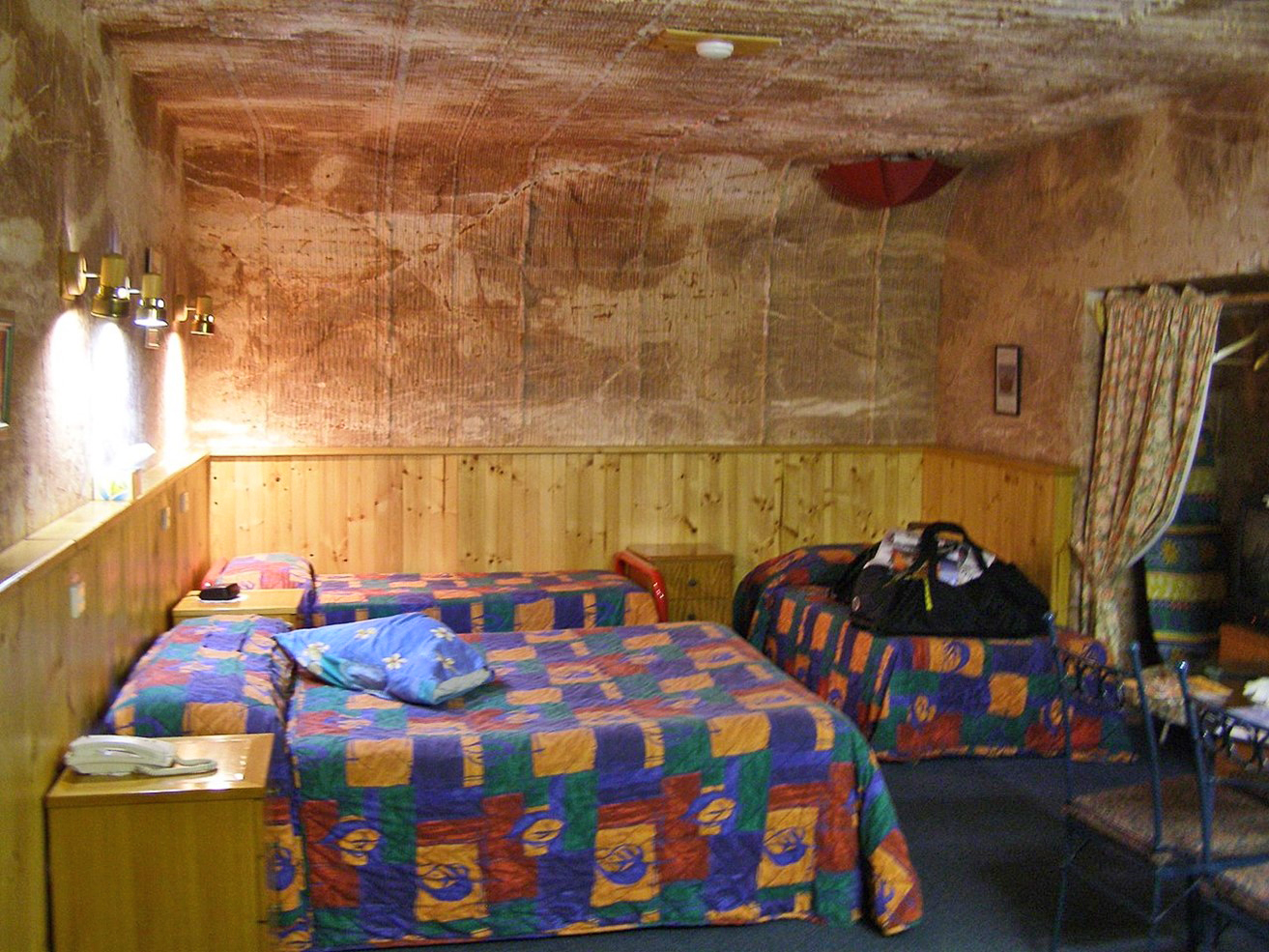
A Coober Pedy underground motel room in 2007. The upside-down umbrella in the corner of the ceiling is used to catch the dirt that falls down the ventilation shaft from the surface.
Credit: Kerry Raymond, via Wikimedia Commons - You may have seen Coober Pedy’s apocalyptic landscapes in movies like Mad Max (1985) and Mortal Kombat (2021).
- While early miners originated the idea of underground living more than 100 years ago, more than 60% of current residents have taken up residence underground, even occupying some of the many discarded opal mines.
- A day’s drive from both Adelaide (9 hours) and Alice Springs (7 hours), Coober Pedy is not just remote, it is totally off the grid.
- The town gets its groundwater from Australia’s Great Artesian Basin but has the highest water prices in South Australia.
- The entire town used to run on loud, smelly diesel generators, but today 70% of the town’s power is generated by a wind and solar farm.
- Since 2019, the hybrid project has integrated 4 MW of wind power and 1 MW of solar power tied into the original diesel power station to ensure the town has the power its residents require. It is a model for other remote communities.
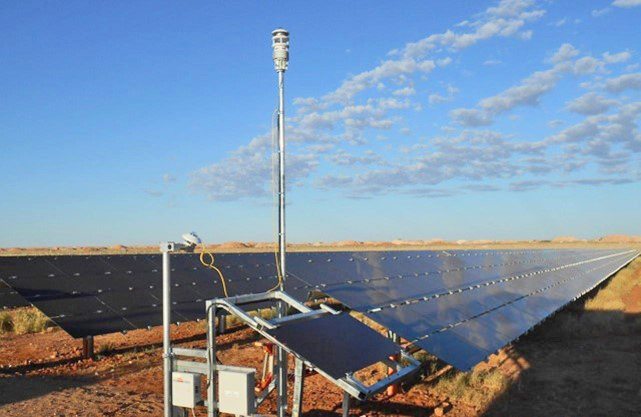
Coober Pedy has traditionally relied on off-grid power, supplied by diesel-powered generators. With the hybrid renewable project switched on in July 2017, 12,000 solar PV panels deliver 1 megawatt of energy, two wind turbines bring 4 megawatts of power, and battery storage rounds out the picture with 500 kilowatt hours. The long-term goal of the project is to provide clean, efficient renewable energy and reduce the town’s reliance on diesel generation by 70%.
Credit: ARENA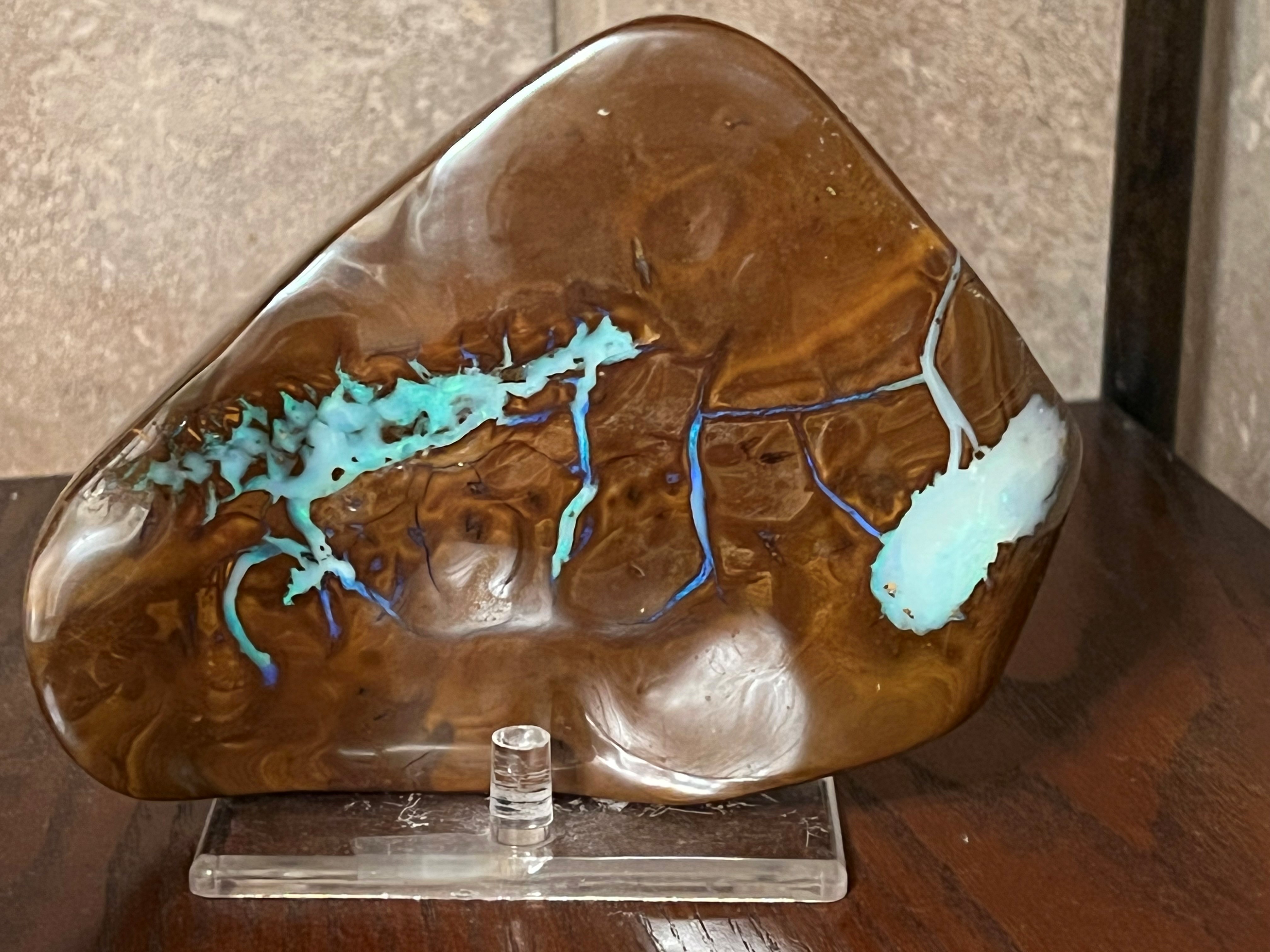
Opal fills sediment voids created by animal burrows and mudcracks in this beautiful specimen.
Credit: Scott Tinker

